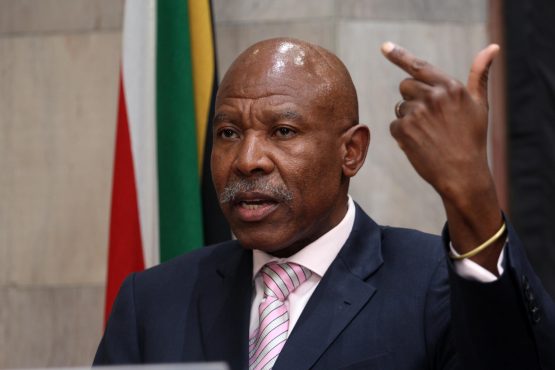Sarb lifts repo rate by 25bps

The South African Reserve Bank (Sarb) lifted the repo rate by 25 basis points on Thursday to 7.25%. Three MPC members preferred the announced increase, while two voted for a 50bps increase.
Sarb Governor Lesetja Kganyago said the statement reflects that inflation globally is high.
“You can rest assured, this central bank means business about price stability – because that is the remit that we are tasked with in terms of the constitution of the Republic of South Africa,” he added.
The raise is the eighth since the central bank began its hiking cycle at the end of 2021 when it adopted a combative stance to tame spiralling inflation.
The 25bps increase follows three consecutive jumbo hikes of 75 basis points each, which signals the Reserve Bank may be at the end of its hiking spell.
Before the rate announcement, economists had already predicted the Sarb would hike again, but had been split on whether it would be a 25 basis points or 50 basis points increase.
The increase in the repo rates come despite December’s surprise inflation numbers, which showed a slight cooling off to 7.2%. South Africa is also contending with the worst power outages since load shedding was first implanted 15 years ago, a concern the Sarb has flagged as a risk to the country’s financial stability.
Kganyago said South Africa’s prospects for growth were more uncertain than normal, in part due to extensive load shedding, pushing the bank to lower its GDP growth projections for the year. The Reserve Bank now forecasts growth of 0.3% in 2023.
“The forecast incorporates an assumption of increased load shedding in each year compared to what was pencilled in at the time of the November meeting,” Kganyago said.
“A material reduction in load shedding would significantly raise growth. There could also be higher investment in alternative energy sources as firms and households offset the impact of load-shedding,” he said.
Speaking to Moneyweb, Frank Blackmore, lead economist at KPMG, said the MPC is not finished with the hiking cycle yet, citing the Reserve Bank’s mandate of bringing inflation to the midpoint of its 3% to 6% target band.
“…As long inflation remains outside the band, and in fact, above the midpoint of the band, it will continue to increase rates, at the rate it deems necessary to bring back expectations to that midpoint of the bank,” he said.
Blackmore cited Russia’s war in Ukraine as the single biggest risk to growth prospects, saying that it’s keeping pressure on both food and fuel prices.
Angelika Goliger, chief economist at EY Africa, said the Sarb may start to slash rates in 2024, saying they’ll remain elevated for the remainder of this year, with the MPC factoring in inflation risks to the upside.
“In line with the expectations in other markets, we are likely nearing the end of our own spate of rate hikes… Although I do think there will be one more repo rate rise of 25bps coming through at the next MPC meeting in March,” Goliger said.
“However, this will depend on how the Rand performs and the extent to which loadshedding places pressure on food prices.
Highlights:
GDP growth for 2023 now forecast at only 0.3% due to load shedding and other constraints. It’s forecast at 0.7% in 2024, and 1% in 2025. A material reduction in load shedding could significantly raise growth.
Headline inflation for 2023 is unchanged at 5.4% and slightly higher at 4.8% for 2024. In 2025 4.5% is expected.
Forecast for core inflation is somewhat lower at 5.2% in 2023 (down from 5.5%) and 4.7% in 2024 (down from 4.8%).
Food price inflation was 9.2% in 2022, and is seen slowing to 7.3% in 2023, and 4.4% in 2024.

